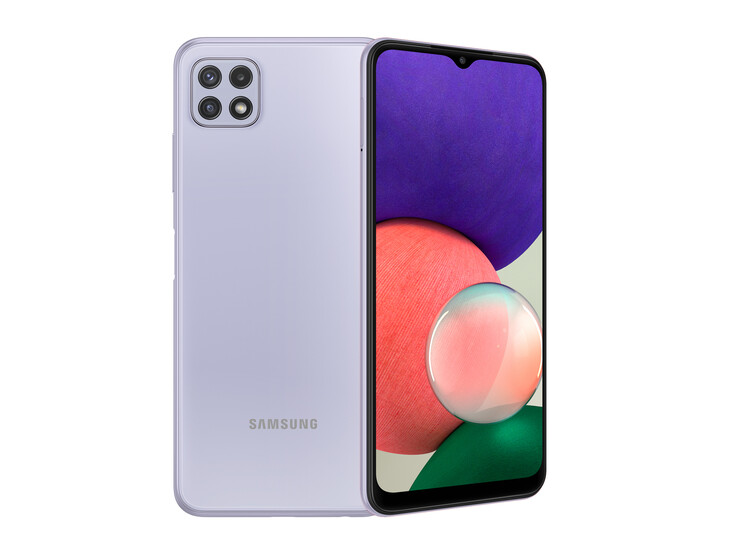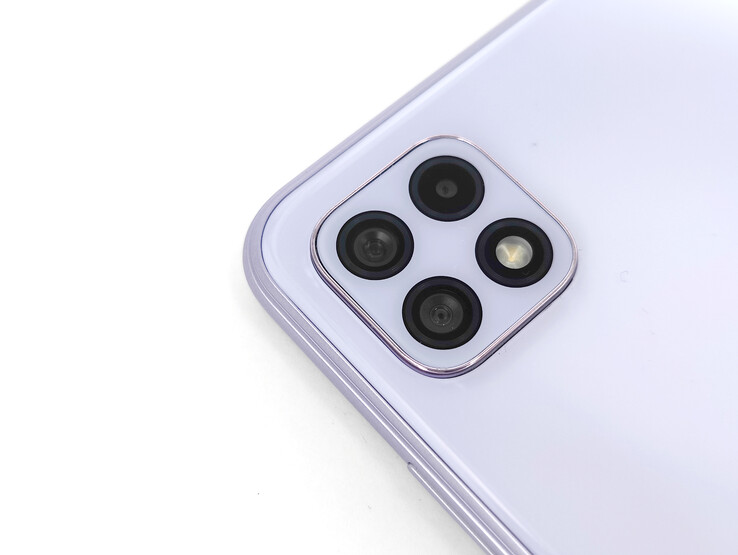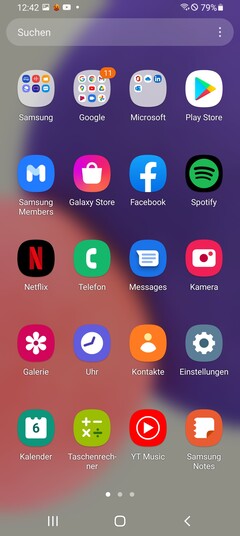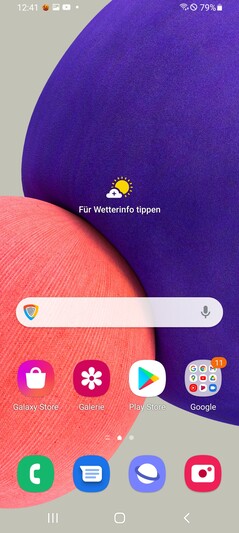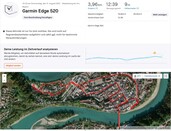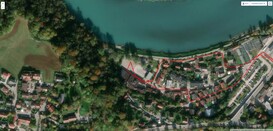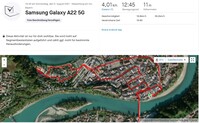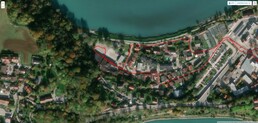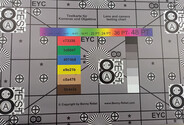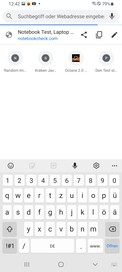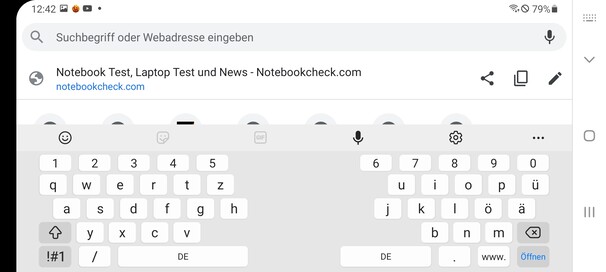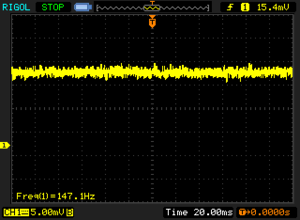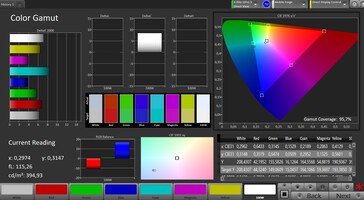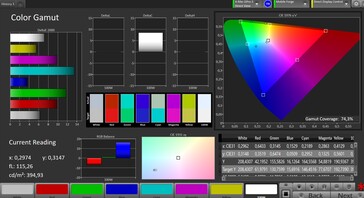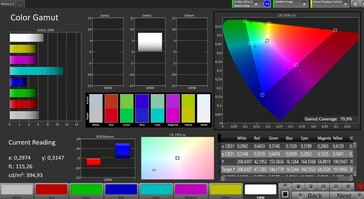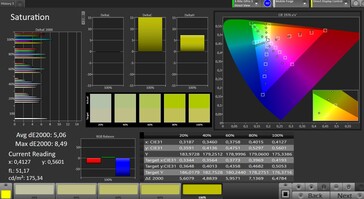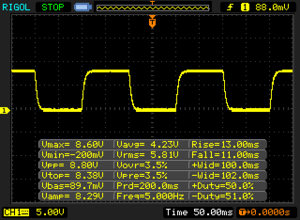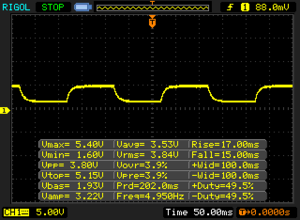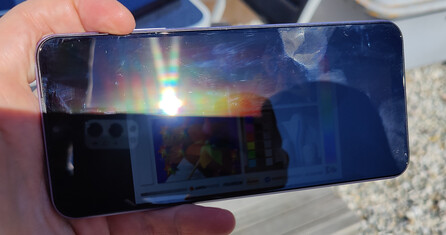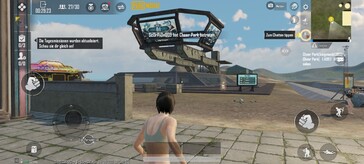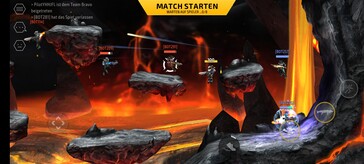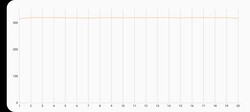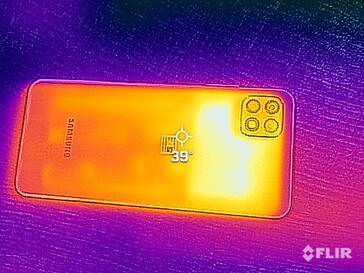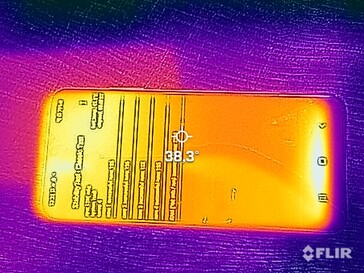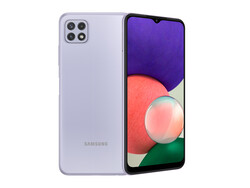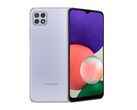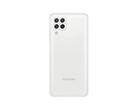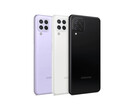Samsung Galaxy A22 5G smartphone review: What does the budget 5G phone have to offer?
Samsung is treading new paths in the mid-range this year: Some models have two smartphones with the same name, but different wireless technology: One comes with 4G and one with 5G, which is also the case for the quite inexpensive Samsung Galaxy A22.
In this review, we'll look at the variant with the faster mobile network, the Samsung Galaxy A22 5G. It's bigger than the 4G version, it has a fancier design, and the smartphones also differ considerably in terms of internal components.
With prices starting at 229 Euros (~$268), the 5G Samsung phone is an affordable mid-range smartphone. It has to face a wide array of strong opponents, which should make this review interesting.
Possible contenders in comparison
Rating | Date | Model | Weight | Drive | Size | Resolution | Price |
|---|---|---|---|---|---|---|---|
| 79.6 % v7 (old) | 08 / 2021 | Samsung Galaxy A22 5G Dimensity 700, Mali-G57 MP2 | 203 g | 64 GB eMMC Flash | 6.60" | 2400x1080 | |
| 79.3 % v7 (old) | 03 / 2021 | Samsung Galaxy A32 5G Dimensity 720, Mali-G57 MP3 | 205 g | 64 GB UFS 2.1 Flash | 6.50" | 1600x720 | |
| 80.4 % v7 (old) | 06 / 2021 | Xiaomi Redmi Note 10 5G Dimensity 700, Mali-G57 MP2 | 190 g | 128 GB UFS 2.2 Flash | 6.50" | 2400x1080 | |
| 79.2 % v7 (old) | 07 / 2021 | Motorola Moto G50 SD 480, Adreno 619 | 192 g | 64 GB UFS 2.1 Flash | 6.50" | 1600x720 | |
| 80.2 % v7 (old) | 07 / 2021 | Nokia X10 SD 480, Adreno 619 | 220 g | 64 GB UFS 2.1 Flash | 6.67" | 2400x1080 |
Case – Unknown display glass
The case of the Samsung Galaxy A22 5G definitely has a high-quality design that is somewhat reminiscent of current iPhones: A slightly more angular finish on the sides and a back side that features a silky shimmer and a matte finish in dark gray, white, or light violet. The smartphone feels good in the hand.
Samsung uses plastic on the back, but nothing has been reported about the display glass on the front, which makes it difficult to assess the display's resistance to shattering. The build quality itself seems high, but a clear cracking noise can be heard when the smartphone is twisted. Strong pressure applied with the fingers to the front and back doesn't get through to the liquid crystal of the display.
The smartphone is by no means light at 203 grams, but it's not much heavier than other smartphones in this price range.
Connectivity – Low premium for more storage
64 GB of eMMC flash memory and 4 GB of RAM are a decent configuration in this phone class, and a 128 GB version is also available for a reasonable premium of 20 Euros (~$23). It's nice that Samsung also considered NFC, since this allows mobile payments and other services.
Although the USB port is designed as a USB-C port, it only supports USB 2.0 speeds internally, which means that wired data transfers can take a while.
microSD card reader
The SD card reader works quite fast for the price range in our Copy Test, and it makes good use of our fast reference microSD card, the Angelbird V60.
| SD Card Reader - average JPG Copy Test (av. of 3 runs) | |
| Samsung Galaxy A22 5G (Angelbird V60) | |
| Nokia X10 (Angelbird V60) | |
| Xiaomi Redmi Note 10 5G (Toshiba Exceria Pro M501) | |
| Motorola Moto G50 (Angelbird V60) | |
Cross Platform Disk Test (CPDT)
Software – Not much is known about updates
Android 11 is preinstalled on the smartphone, and Samsung adds its own OneUI 3.1 on top. The security patches date back to May 2021 at the time of testing, requiring therefore an update.
Samsung hasn't disclosed how many software updates there will be for the cheaper Galaxy A models, which also include the Galaxy A22 5G. However, at least an update to Android 12 is likely based on our experience. The manufacturer runs an information page regarding Android updates.
Many Samsung apps and also some third-party apps are found on the smartphone, and not all of them can be fully uninstalled.
A DRM-L1 certification has been carried out, which means that streaming content can be viewed in HD quality.
Communication and GNSS – Stable WLAN in the Galaxy phone
The Samsung Galaxy A22 5G's name already implies that it offers fast Internet. There's still room for improvement in terms of frequency range, especially for LTE, but users who aren't constantly traveling around the world should be able to manage with the frequencies available.
We found the signal strength to be rather mediocre in our sample test; only 2 out of 5 bars are often available in areas where other smartphones have full reception.
We also examine the Wi-Fi speed with our Netgear Nighthawk AX12 reference router. The Galaxy smartphone performs very well here. Although Wi-Fi 6 isn't available, the class-standard Wi-Fi 5 is, and the test device achieves pretty high transfer rates, even in contrast to the comparison devices. Furthermore, the rates measured remain very stable throughout the duration of the test.
| Networking | |
| iperf3 transmit AX12 | |
| Samsung Galaxy A22 5G | |
| Samsung Galaxy A32 5G | |
| Nokia X10 | |
| Motorola Moto G50 | |
| Xiaomi Redmi Note 10 5G | |
| iperf3 receive AX12 | |
| Samsung Galaxy A32 5G | |
| Samsung Galaxy A22 5G | |
| Xiaomi Redmi Note 10 5G | |
| Nokia X10 | |
| Motorola Moto G50 | |
The smartphone's positioning system proves to be very fast outdoors, and it can determine our location with an accuracy of up to 2 meters without any major delays, which is very good. It detects satellites belonging to the GPS, GLONASS, Galileo, and BeiDou networks. In addition, it also uses a satellite of the SBAS support system, making the positioning even more accurate.
The smartphone has to show what it can do in our field test, a bike ride with the Galaxy A22 5G and the Garmin Edge 520 navigator. The correct lane isn't shown accurately in the bridge section, and curves are left out a few times, but the overall positioning accuracy is good, especially considering the price range.
Telephone and call quality – Samsung phone with clear voice transmission
Samsung's in-house phone app is used in our test device. It focuses more on the numeric keypad than Google's standard Android app, but it's still straightforward and easy to use. VoLTE and VoWiFi are naturally on board.
The overall call quality is convincing: Even fairly loud or quiet voices are picked up reliably by the microphone. The person on the other end sounds clear, and they perceive our voice intelligibly as well.
Cameras – No direct zoom
There are three cameras at the back, although only the main camera and the wide-angle camera can actually be used for taking pictures. The third lens is only used to support portrait shots.
The main camera has a resolution of 48 megapixels, but usually, only pictures with a quarter of the resolution are generated. This is due to the fact that every four pixels are combined into one in order to increase the light yield. Pictures with 12 megapixels are also completely sufficient for the vast majority of use cases. However, users can also take pictures with the full resolution in a special mode if they want to.
The pictures taken with the main camera are modest in terms of color reproduction, which is more true to nature but makes images appear a bit less vibrant. When it comes to detail sharpness, the camera is only mediocre. Clear pixel artifacts are visible in surfaces. Under low light and high contrasts, the camera does a reasonably good job of lighting subjects; it can still show details, and it does a pretty good job overall.
The wide-angle lens can be used for snapshots, but you shouldn't zoom in too much, because details aren't displayed with clarity. You can only zoom by directly switching between the main and wide-angle lenses; intermediate levels aren't possible.
Videos can be recorded with the main camera at a maximum of 2K resolution and at 30 fps. In general, recording at more than 30 fps isn't supported. Switching between lenses is only possible before starting the video recording. Usually, the autofocus appears to be quite fast, but it repeatedly takes a while until it focuses on the subject that is actually desired, and it also pumps briefly from time to time. Exposure is sometimes adjusted very abruptly, but at least it's nearly stepless when it changes.
Image comparison
Choose a scene and navigate within the first image. One click changes the position on touchscreens. One click on the zoomed-in image opens the original in a new window. The first image shows the scaled photograph of the test device.
Main camera - FlowerMain camera - SurroundingsMain camera - Low lightWide-angle cameraThe Galaxy A22 5G's main camera has to prove itself in the lab as well. Contrast is decent in good lighting conditions, but individual details blur a bit towards the edges. In low light, you can actually only make out the outlines of subjects in the pictures.
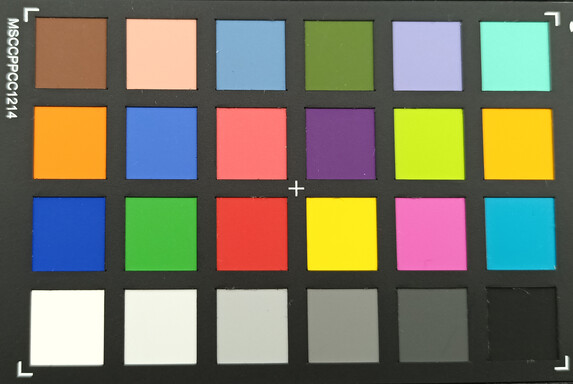
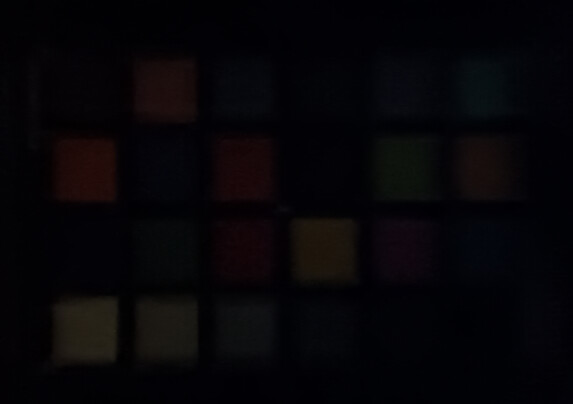
Accessories and warranty – 15-watt charger included
Besides a charger with a maximum capacity of 15 watts and a charging cable, the smartphone only comes with a SIM tool. At the time of writing at least, there are no special accessories for the Galaxy A22 5G available on Samsung's website. If you want another 15-watt charger, you can buy it directly from Samsung for just under 15 Euros (~$18).
Samsung offers a 24-month warranty for the smartphone in Central Europe. There are many repair options: From mobile repair buses that drive across countries at certain dates to local service centers or the option of sending the device in. You can also see what an out-of-warranty repair will cost online if you want to.
Input devices and handling – Fingerprint sensor integrated into the standby button
The touchscreen can be controlled very precisely, and the physical buttons are very easy to find. Furthermore, the hardware buttons fit perfectly into the case.
The standby button is also the fingerprint sensor. It recognizes the finger that is placed on it reliably, but it needs a brief moment to unlock the device.
Except for the volume rocker and the standby button, there are no physical buttons like for Google Assistant or a camera shutter release, for example.
Display – Decent in low light
Unlike the Galaxy A22 4G, the 5G model doesn't come with an OLED display. That alone wouldn't be too bad, but the IPS panel in the Galaxy A22 5G is quite dim: With a maximum of 418 cd/m², it reaches much less brightness than the display in the Nokia X10, for example. This can be a problem especially in bright environments.
The brightness distribution is quite uneven as well: The darkest area on the display is only 76% as bright as the brightest area.
Despite its low price, however, the Galaxy A22 5G has a Full HD panel, something that we find quite commendable in this price range. In addition, the display also supports 90 Hz, resulting in a smoother experience when scrolling and using the device.
| |||||||||||||||||||||||||
Brightness Distribution: 76 %
Center on Battery: 415 cd/m²
Contrast: 1596:1 (Black: 0.26 cd/m²)
ΔE ColorChecker Calman: 5.41 | ∀{0.5-29.43 Ø4.78}
ΔE Greyscale Calman: 4.8 | ∀{0.09-98 Ø5}
95.7% sRGB (Calman 2D)
Gamma: 2.348
CCT: 7748 K
| Samsung Galaxy A22 5G IPS, 2400x1080, 6.6" | Samsung Galaxy A32 5G TFT-LCD, 1600x720, 6.5" | Xiaomi Redmi Note 10 5G IPS, 2400x1080, 6.5" | Motorola Moto G50 IPS, 1600x720, 6.5" | Nokia X10 IPS, 2400x1080, 6.7" | |
|---|---|---|---|---|---|
| Screen | -15% | 31% | 12% | -4% | |
| Brightness middle (cd/m²) | 415 | 543 31% | 550 33% | 340 -18% | 674 62% |
| Brightness (cd/m²) | 378 | 512 35% | 515 36% | 325 -14% | 630 67% |
| Brightness Distribution (%) | 76 | 85 12% | 86 13% | 92 21% | 83 9% |
| Black Level * (cd/m²) | 0.26 | 0.63 -142% | 0.32 -23% | 0.18 31% | 0.78 -200% |
| Contrast (:1) | 1596 | 862 -46% | 1719 8% | 1889 18% | 864 -46% |
| Colorchecker dE 2000 * | 5.41 | 4.9 9% | 1.8 67% | 4.75 12% | 3.39 37% |
| Colorchecker dE 2000 max. * | 9.77 | 8.6 12% | 3.1 68% | 7.53 23% | 6.95 29% |
| Greyscale dE 2000 * | 4.8 | 6.3 -31% | 2.5 48% | 3.9 19% | 4.4 8% |
| Gamma | 2.348 94% | 2.23 99% | 2.28 96% | 2.224 99% | 2.175 101% |
| CCT | 7748 84% | 8120 80% | 6326 103% | 7384 88% | 8301 78% |
* ... smaller is better
Screen Flickering / PWM (Pulse-Width Modulation)
| Screen flickering / PWM detected | 147 Hz | ≤ 10 % brightness setting | |
The display backlight flickers at 147 Hz (worst case, e.g., utilizing PWM) Flickering detected at a brightness setting of 10 % and below. There should be no flickering or PWM above this brightness setting. The frequency of 147 Hz is very low, so the flickering may cause eyestrain and headaches after extended use. In comparison: 53 % of all tested devices do not use PWM to dim the display. If PWM was detected, an average of 8142 (minimum: 5 - maximum: 343500) Hz was measured. | |||
We register a slight PWM flickering below 10% brightness, which helps to further reduce the display's brightness. The frequency could definitely be problematic for sensitive users, which is why we recommend testing the smartphone display at low brightness levels before buying it.
A slight blue tint becomes visible when we use the spectrophotometer and the CalMAN software to assess the display. Color reproduction is acceptable, but some red and orange tones are significantly inaccurate. Users who want to be absolutely sure that they're seeing the right colors on the display will probably be wrong here.
Display Response Times
| ↔ Response Time Black to White | ||
|---|---|---|
| 24 ms ... rise ↗ and fall ↘ combined | ↗ 13 ms rise | |
| ↘ 11 ms fall | ||
| The screen shows good response rates in our tests, but may be too slow for competitive gamers. In comparison, all tested devices range from 0.1 (minimum) to 240 (maximum) ms. » 53 % of all devices are better. This means that the measured response time is worse than the average of all tested devices (20.2 ms). | ||
| ↔ Response Time 50% Grey to 80% Grey | ||
| 32 ms ... rise ↗ and fall ↘ combined | ↗ 17 ms rise | |
| ↘ 15 ms fall | ||
| The screen shows slow response rates in our tests and will be unsatisfactory for gamers. In comparison, all tested devices range from 0.165 (minimum) to 636 (maximum) ms. » 42 % of all devices are better. This means that the measured response time is similar to the average of all tested devices (31.7 ms). | ||
Performance – MediaTek SoC brings improvements
A MediaTek Dimensity 700 is the SoC installed in the Samsung Galaxy A22 5G. The predecessor, the Galaxy A21s, still came with an in-house Exynos SoC that wasn't really able to keep up with other smartphones in the price range. But this time, things are different: The Galaxy A22 5G even manages to take the lead in the benchmarks at times.
However, the smartphone still lags slightly behind in terms of graphics performance. However, the differences compared to the rest of the smartphones should hardly be really noticeable in everyday use, since they are too small for that.
Overall, Samsung has made a better choice in terms of the SoC in this generation, at least in the 5G model, and it has also been decently optimized. Although stutters might occur in everyday use from time to time, they're more likely to happen when running very demanding apps or performing several tasks at the same time.
| AnTuTu v8 - Total Score (sort by value) | |
| Samsung Galaxy A22 5G | |
| Samsung Galaxy A32 5G | |
| Xiaomi Redmi Note 10 5G | |
| Motorola Moto G50 | |
| Nokia X10 | |
| Average MediaTek Dimensity 700 (249843 - 261067, n=3) | |
| AImark - Score v2.x (sort by value) | |
| Samsung Galaxy A22 5G | |
| Samsung Galaxy A32 5G | |
| Xiaomi Redmi Note 10 5G | |
| Motorola Moto G50 | |
| Nokia X10 | |
| Average MediaTek Dimensity 700 (4108 - 12011, n=5) | |
When it comes to browser performance, the smartphone also proves to be very capable. It can outperform most comparison devices in the benchmarks, but the Nokia X10 and the Motorola Moto G50 are still a bit faster overall.
There's a slight lag when loading large websites in everyday use, and you have to wait for images to load from time to time. All in all, however, the browsing experience is quite fast.
| Jetstream 2 - 2.0 Total Score | |
| Average of class Smartphone (23.8 - 387, n=153, last 2 years) | |
| Motorola Moto G50 (Chrome 91) | |
| Average MediaTek Dimensity 700 (36 - 58.2, n=8) | |
| Nokia X10 (Chrome 91) | |
| Samsung Galaxy A22 5G (Chrome 92) | |
| Xiaomi Redmi Note 10 5G (Chrome 90) | |
| Samsung Galaxy A32 5G (Chrome 88) | |
| JetStream 1.1 - Total Score | |
| Nokia X10 (Chrome 91) | |
| Motorola Moto G50 (Chrome 91) | |
| Samsung Galaxy A22 5G (Chrome 92) | |
| Average MediaTek Dimensity 700 (69.5 - 78.4, n=4) | |
| Xiaomi Redmi Note 10 5G (Chrome 90) | |
| Samsung Galaxy A32 5G (Chrome 88) | |
| Speedometer 2.0 - Result 2.0 | |
| Average of class Smartphone (15.2 - 643, n=129, last 2 years) | |
| Motorola Moto G50 (Chome 91) | |
| Nokia X10 (Chome 91) | |
| Average MediaTek Dimensity 700 (34.4 - 41.7, n=6) | |
| Samsung Galaxy A22 5G (Chome 92) | |
| Xiaomi Redmi Note 10 5G (Chrome 90) | |
| WebXPRT 3 - Overall | |
| Average of class Smartphone (38 - 380, n=38, last 2 years) | |
| Motorola Moto G50 (Chrome 91) | |
| Nokia X10 (Chrome 91) | |
| Samsung Galaxy A22 5G (Chrome 92) | |
| Average MediaTek Dimensity 700 (50 - 65, n=4) | |
| Samsung Galaxy A32 5G (Chrome 88) | |
| Xiaomi Redmi Note 10 5G (Chrome 90) | |
| Octane V2 - Total Score | |
| Average of class Smartphone (2228 - 121337, n=201, last 2 years) | |
| Average MediaTek Dimensity 700 (15352 - 21843, n=9) | |
| Samsung Galaxy A22 5G (Chrome 92) | |
| Motorola Moto G50 (Chrome 91) | |
| Nokia X10 (Chrome 91) | |
| Xiaomi Redmi Note 10 5G (Chrome 90) | |
| Samsung Galaxy A32 5G (Chrome 88) | |
| Mozilla Kraken 1.1 - Total | |
| Samsung Galaxy A32 5G (Chrome 88) | |
| Xiaomi Redmi Note 10 5G (Chrome 90) | |
| Nokia X10 (Chrome 91) | |
| Motorola Moto G50 (Chrome 91) | |
| Average MediaTek Dimensity 700 (2195 - 3387, n=8) | |
| Samsung Galaxy A22 5G (Chrome 92) | |
| Average of class Smartphone (257 - 28190, n=156, last 2 years) | |
* ... smaller is better
The Samsung Galaxy A22 5G paints a sad picture when it comes to storage speed: The slow eMMC flash memory can't keep up with the UFS storage in the Galaxy A32 5G or the Xiaomi Redmi Note 10 5G.
Overall, data transfers take longer than on similarly priced devices, and loading times are longer as well.
| Samsung Galaxy A22 5G | Samsung Galaxy A32 5G | Xiaomi Redmi Note 10 5G | Motorola Moto G50 | Nokia X10 | Average 64 GB eMMC Flash | Average of class Smartphone | |
|---|---|---|---|---|---|---|---|
| AndroBench 3-5 | 114% | 116% | 23% | 84% | -31% | 491% | |
| Sequential Read 256KB (MB/s) | 300.5 | 858 186% | 939 212% | 392 30% | 498.6 66% | 277 ? -8% | 2242 ? 646% |
| Sequential Write 256KB (MB/s) | 210.3 | 381.7 82% | 398 89% | 204.4 -3% | 455 116% | 178.4 ? -15% | 1850 ? 780% |
| Random Read 4KB (MB/s) | 118 | 174.6 48% | 151.6 28% | 89.2 -24% | 170.6 45% | 60.7 ? -49% | 296 ? 151% |
| Random Write 4KB (MB/s) | 69.2 | 167.1 141% | 162.8 135% | 131.7 90% | 145.4 110% | 33.8 ? -51% | 336 ? 386% |
Games – Surprise in 2D games
The Galaxy phone has a surprise in store when it comes to our gaming benchmarks: In our fps measurements with GameBench's software, the smartphone achieves very high frame rates in the fast 2D shooter Armajet. Admittedly, they fluctuate heavily between 65 and 90 fps, but that's more than some higher-priced smartphones reach in this game. Samsung appears to have optimized its smartphone here.
However, in 3D games like PUBG, the performance that is typical for the class is seen again, namely that a maximum of 40 fps is achieved, and that this isn't that stable, either. If you have very high requirements as a gamer, you'll probably have to spend more money, but users who like to play fast 2D games and want high frame rates still have good chances with the Galaxy A22 5G.
The controls are also reliable, and the touchscreen responds quickly.
Emissions – No throttling in the Galaxy phone
Temperature
The Samsung phone's surface heats up to a maximum of 41.1 °C (~106 °F) under load. The hottest areas are found in the smartphone's upper area around the camera. The temperature increase is within the usual range and shouldn't lead to any problems in normal ambient temperatures.
Furthermore, performance doesn't seem to be affected by the temperature increase as the endurance benchmarks show: In the 3DMark Wild Life Stress Test, for example, performance is still 99% of the initial performance after having run the benchmark 20 times.
| 3DMark | |
| Wild Life Stress Test Stability | |
| Nokia X10 | |
| Motorola Moto G50 | |
| Samsung Galaxy A22 5G | |
| Samsung Galaxy A32 5G | |
| Wild Life Extreme Stress Test | |
| Nokia X10 | |
| Motorola Moto G50 | |
| Samsung Galaxy A22 5G | |
(±) The maximum temperature on the upper side is 40.1 °C / 104 F, compared to the average of 35.2 °C / 95 F, ranging from 21.9 to 247 °C for the class Smartphone.
(±) The bottom heats up to a maximum of 41.1 °C / 106 F, compared to the average of 34 °C / 93 F
(+) In idle usage, the average temperature for the upper side is 24.3 °C / 76 F, compared to the device average of 32.9 °C / 91 F.
Speaker
The speaker at the bottom has to do its job alone, meaning that the phone only offers mono sound. At up to 83.5 dB(A), it can produce a fairly strong sound, but bass and low mids are hardly available, and sound isn't very powerful overall. The comparison with the Galaxy A32 5G clearly shows the difference; you get a considerably fuller and more balanced sound there.
At least you don't have to deal with overemphasized trebles in our test device, and you can still listen at full volume without your ears ringing. Dolby Atmos can also be activated in the settings to improve sound, but we only noticed a minimal difference.
Audio output via Bluetooth and wired headphones works well, but you'll have to do without the aptX HD codecs used for improving sound during wireless playback.
Samsung Galaxy A22 5G audio analysis
(+) | speakers can play relatively loud (83.5 dB)
Bass 100 - 315 Hz
(-) | nearly no bass - on average 31.9% lower than median
(±) | linearity of bass is average (10% delta to prev. frequency)
Mids 400 - 2000 Hz
(±) | higher mids - on average 6.3% higher than median
(+) | mids are linear (6.2% delta to prev. frequency)
Highs 2 - 16 kHz
(+) | balanced highs - only 3.8% away from median
(+) | highs are linear (5.8% delta to prev. frequency)
Overall 100 - 16.000 Hz
(±) | linearity of overall sound is average (24.6% difference to median)
Compared to same class
» 59% of all tested devices in this class were better, 7% similar, 35% worse
» The best had a delta of 11%, average was 35%, worst was 134%
Compared to all devices tested
» 74% of all tested devices were better, 6% similar, 20% worse
» The best had a delta of 4%, average was 24%, worst was 134%
Samsung Galaxy A32 5G audio analysis
(+) | speakers can play relatively loud (93.2 dB)
Bass 100 - 315 Hz
(-) | nearly no bass - on average 22.6% lower than median
(+) | bass is linear (3.3% delta to prev. frequency)
Mids 400 - 2000 Hz
(±) | reduced mids - on average 5.8% lower than median
(+) | mids are linear (4.3% delta to prev. frequency)
Highs 2 - 16 kHz
(±) | higher highs - on average 7.1% higher than median
(+) | highs are linear (3.5% delta to prev. frequency)
Overall 100 - 16.000 Hz
(±) | linearity of overall sound is average (17.7% difference to median)
Compared to same class
» 13% of all tested devices in this class were better, 8% similar, 79% worse
» The best had a delta of 11%, average was 35%, worst was 134%
Compared to all devices tested
» 34% of all tested devices were better, 8% similar, 58% worse
» The best had a delta of 4%, average was 24%, worst was 134%
Battery life – Samsung's phone charges slowly
Energy consumption
In terms of power consumption, the Samsung phone is on par with its class and even proves to be slightly less taxing than the competition in some idle scenarios. Consumption is also moderate under load, while the Samsung Galaxy A32 5G in particular proved to be very power-hungry here.
| Off / Standby | |
| Idle | |
| Load |
|
Key:
min: | |
| Samsung Galaxy A22 5G 5000 mAh | Samsung Galaxy A32 5G 5000 mAh | Xiaomi Redmi Note 10 5G 5000 mAh | Motorola Moto G50 5000 mAh | Nokia X10 4470 mAh | Average MediaTek Dimensity 700 | Average of class Smartphone | |
|---|---|---|---|---|---|---|---|
| Power Consumption | -42% | -10% | -1% | -10% | -22% | -36% | |
| Idle Minimum * (Watt) | 0.9 | 0.64 29% | 0.71 21% | 0.9 -0% | 0.8 11% | 0.841 ? 7% | 0.849 ? 6% |
| Idle Average * (Watt) | 1.3 | 1.95 -50% | 2.08 -60% | 1.5 -15% | 1.7 -31% | 2.1 ? -62% | 1.43 ? -10% |
| Idle Maximum * (Watt) | 1.7 | 1.98 -16% | 2.13 -25% | 1.9 -12% | 1.9 -12% | 2.26 ? -33% | 1.615 ? 5% |
| Load Average * (Watt) | 3.8 | 6.77 -78% | 3.44 9% | 3.5 8% | 4.5 -18% | 4.39 ? -16% | 7.08 ? -86% |
| Load Maximum * (Watt) | 5.8 | 11.42 -97% | 5.58 4% | 4.9 16% | 5.9 -2% | 6.21 ? -7% | 11.2 ? -93% |
* ... smaller is better
Energy consumption: Geekbench (150 cd/m²)
Energy consumption: GFXBench (150 cd/m²)
Battery life
The runtimes of the Samsung Galaxy A22 5G are on par with its class. The 5,000 mAh battery enables a decent endurance that is considerably better than that of the Galaxy A21s. The step towards a MediaTek SoC in comparison to the in-house Exynos chips was probably worth it here.
With over 19 hours in our Wi-Fi test, the smartphone should easily survive two workdays without charging. This eases the situation when the battery level drops below 30%: The smartphone doesn't need to be plugged in right away but still has many hours of normal use ahead of it instead.
The battery charges at a maximum of 15 watts. In view of current charging technologies of 30 or even 65 watts, this is quite low. You shouldn't be surprised if it occasionally takes over 2 hours for the smartphone to be fully charged again, or if you can't get that much power into the battery in a short period of time.
| Samsung Galaxy A22 5G 5000 mAh | Samsung Galaxy A32 5G 5000 mAh | Xiaomi Redmi Note 10 5G 5000 mAh | Motorola Moto G50 5000 mAh | Nokia X10 4470 mAh | |
|---|---|---|---|---|---|
| Battery runtime | 9% | -4% | 3% | -17% | |
| Reader / Idle (h) | 47.6 | 49.3 4% | 49.6 4% | 50.4 6% | 40.6 -15% |
| H.264 (h) | 21.8 | 22.1 1% | 16.9 -22% | 21.7 0% | 16.3 -25% |
| WiFi v1.3 (h) | 19.3 | 20.6 7% | 18.6 -4% | 20 4% | 14.9 -23% |
| Load (h) | 5.3 | 6.6 25% | 5.7 8% | 5.4 2% | 5 -6% |
Pros
Cons
Verdict – Better with MediaTek
The Samsung Galaxy A22 5G demonstrates quite impressively that the Koreans are capable of designing great smartphones when they're not tied to the limitations of the in-house Exynos SoCs. A MediaTek SoC is used here, which allows the test device to provide long battery life and decent performance without overheating.
Most of the smartphone's aspects hardly leave any room for criticism given the device's price range: The Wi-Fi signal is very stable and fast in our test, the positioning is reasonably accurate, and 5G connectivity is available, but the smartphone also has to struggle with a somewhat weak signal strength.
The fact that Samsung hasn't provided any information about possible updates and refers here to the fast-changing technology is a bit lame, in our opinion; after all, other manufacturers are managing to succeed in this respect. For example, Nokia offers an update guarantee for three Android versions with the Nokia X10.
The Galaxy A22 5G had a small surprise in store in terms of gaming when it achieved very high frame rates in Armajet and went beyond 60 fps.
The Samsung Galaxy A22 5G is a fast mid-range smartphone with a somewhat slow storage, but it can convince in many areas.
The Galaxy A32 5G, also from Samsung, is even a bit faster, and it packs a better speaker. The Xiaomi Redmi Note 10 5G has a significantly brighter display.
Price and availability
Samsung Galaxy A22 5G
- 08/09/2021 v7 (old)
Florian Schmitt




